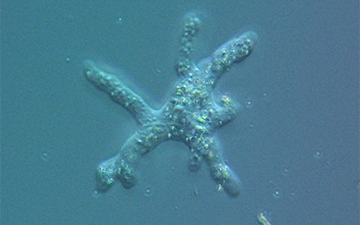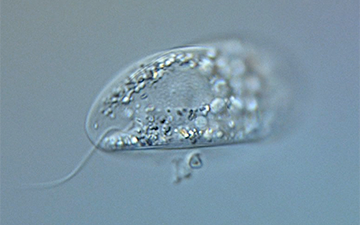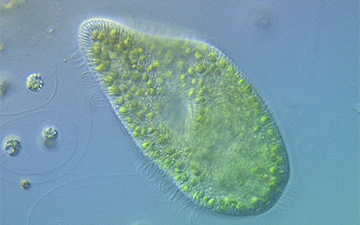Pond Biodiversity Deck (Beta)
2015 – (See Cards/Deck Info | Download | Purchase)…
This deck, hosted by the Keeling Lab at UBC, is a special microbial STARTER deck. It includes a variety of organisms that were found in a small riparian system outside the Beaty Biodiversity Museum in Vancouver, British Columbia. As such, it is a good representation of pond microbial biodiversity. Note the game is currently in beta as the scientific content is continually being vetted by experts. Note that the general game play is based on trophic connections that are all “black” in colour, and represented by the usual FOOD CHAIN numbers of 1 to 3. This game does not work with other PHYLO game systems.

Phacus
Phacus genus


2 POINTS
Play: Phacus has a MOVE of 1, and is considered an AUXOTROPH
Fact: Phacus propels itself by gyrating its body.

Polychaos
Polychaos genus


4 POINTS
Play: Polychaos has a MOVE of 2, and is considered an HETEROTROPH.
Fact: Polychaos are often defined as unicellular organisms with no defined shape.

Peridinium
Peridinium genus


4 POINTS
Play: Peridinium has a MOVE of 1, and is considered a MIXOTROPH
Fact: Peridinium morphology is typical of an armoured dinoflagellate type.

Petalomonas
Petalomonas genus


4 POINTS
Play: Petalomonas has a MOVE of 1, and is considered an HETEROTROPH
Fact: Petalomonas feeds by phagocytosis.

Paramecium
Paramecium genus


7 POINTS
Play: Paramecium has a MOVE of 1, and is considered an EUKARYOTROPH.
Fact: The green things are endosymbiotic algae known as chlorella.

Nitzschia
Nitzschia group


2 POINTS
Play: Nitzschia is considered an AUXOTROPH
Fact: Nitzschia are a common form of phytoplankton and have cell walls made of silica (called a frustule).